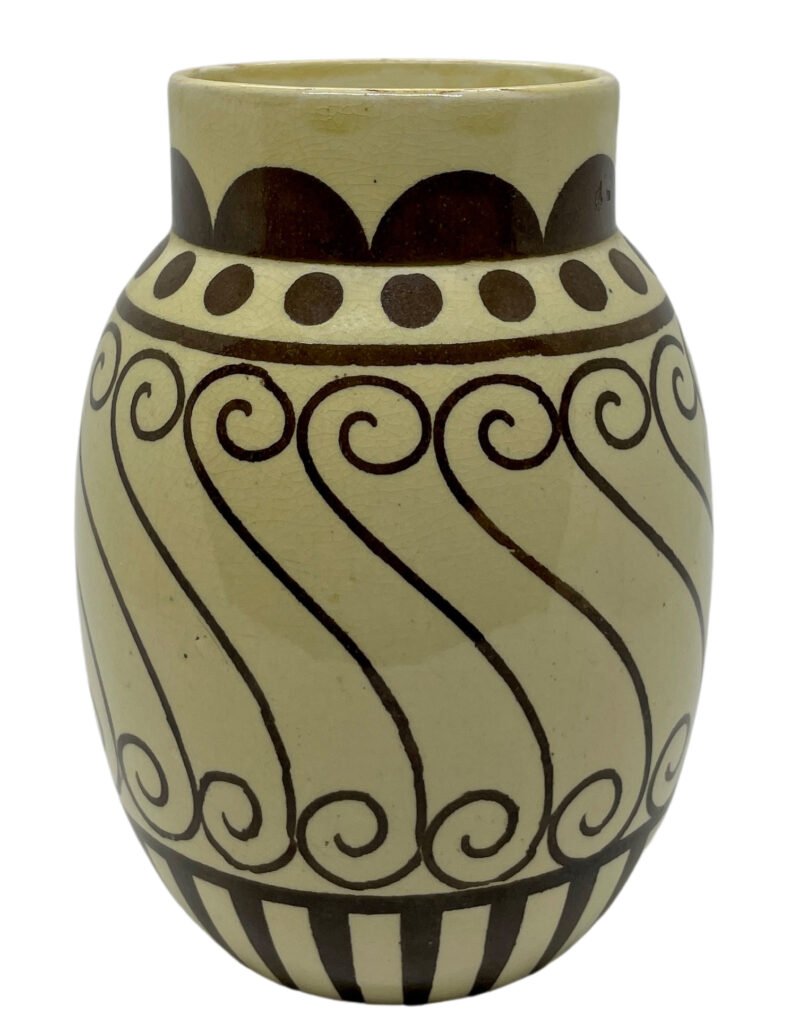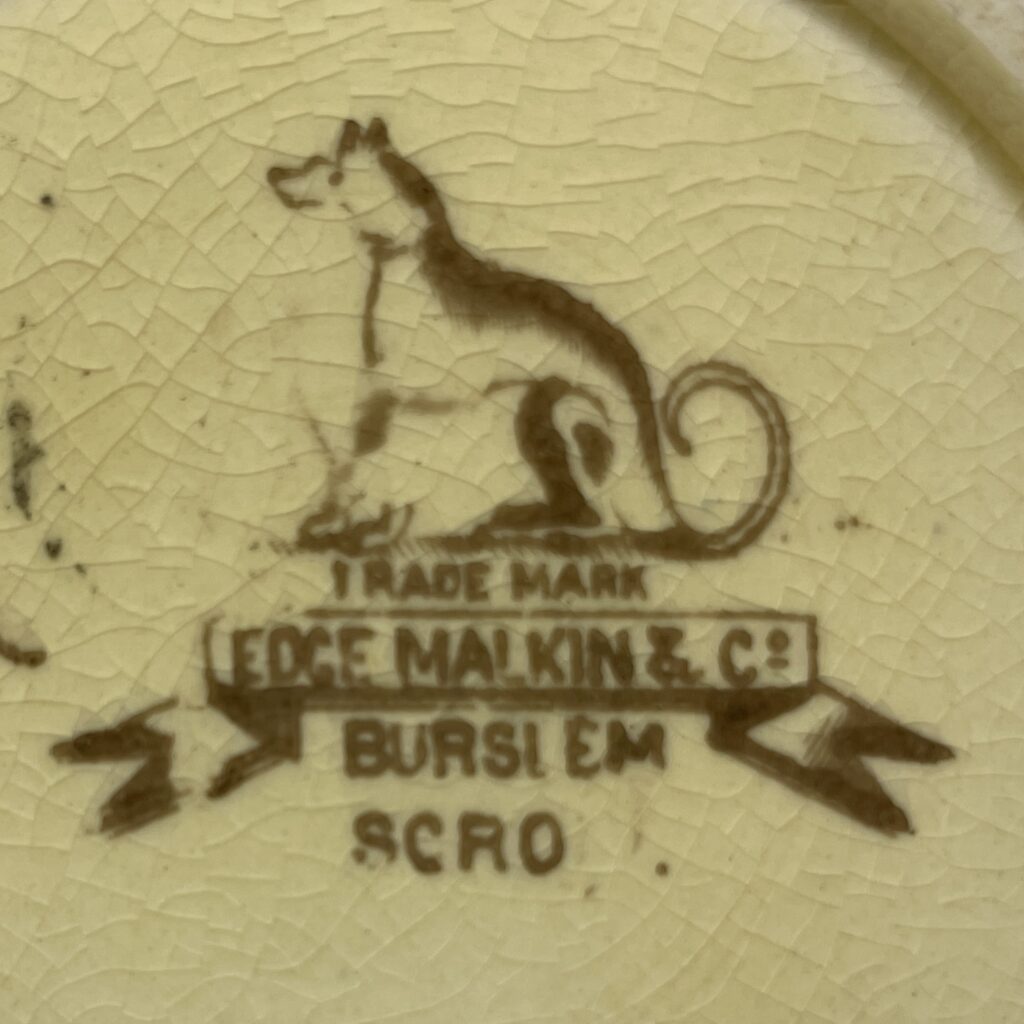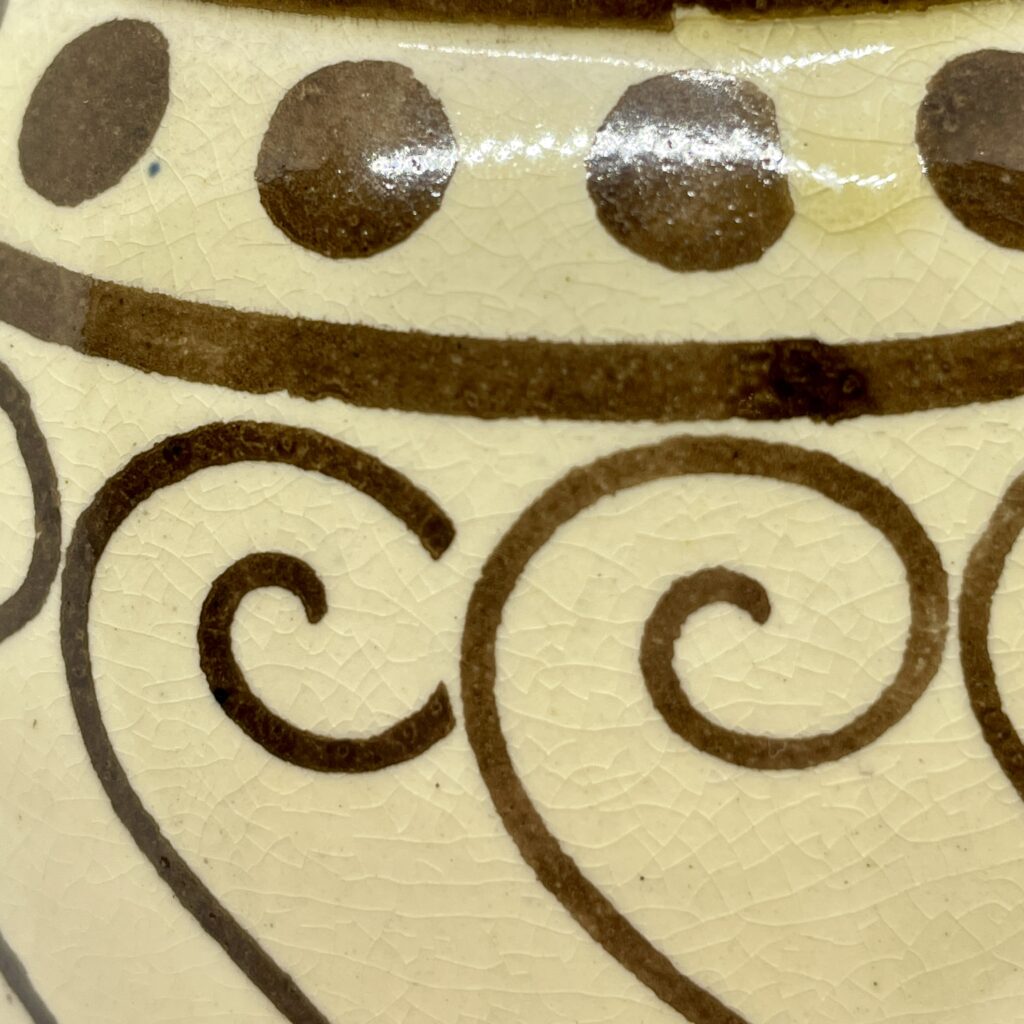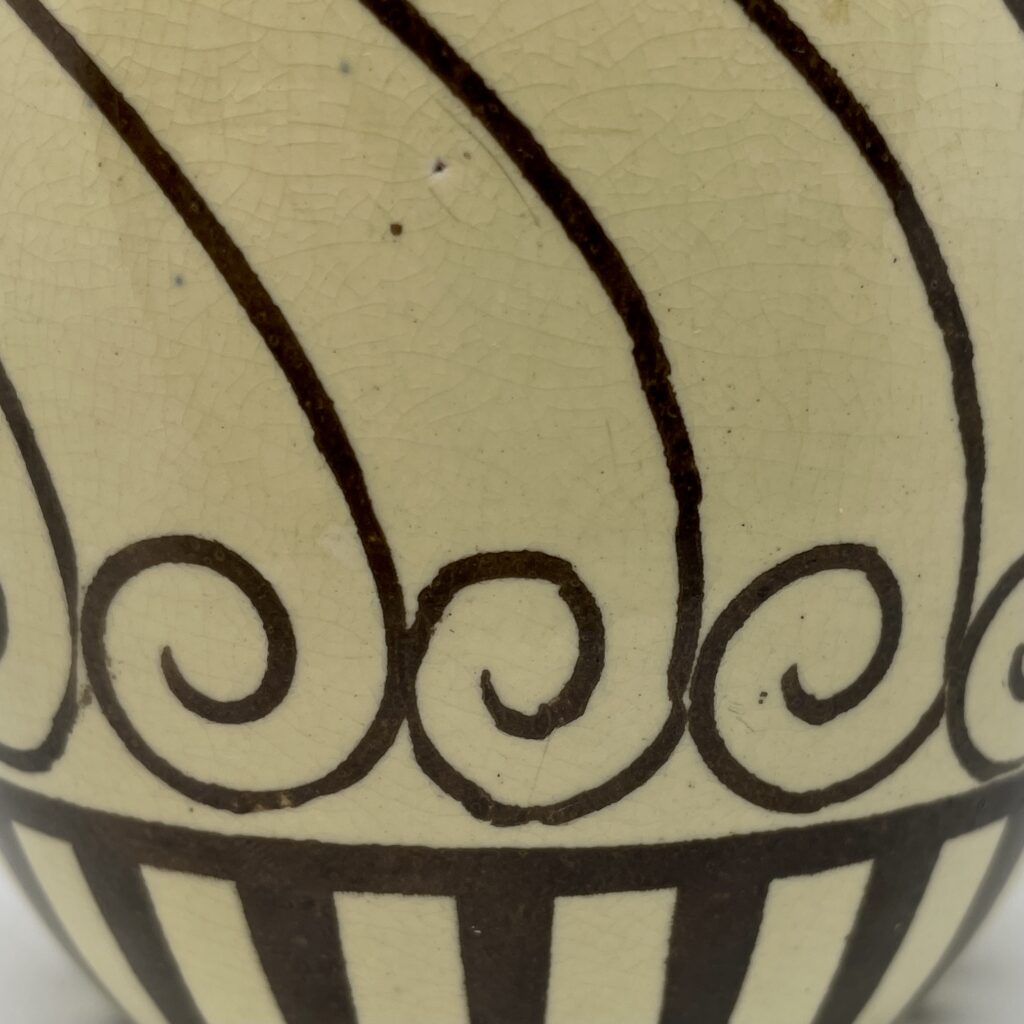If I asked you when you thought this vase had been made, what would you say?

The 1910s-20s? The geometric patterns could arguably be described as Modernist, and the ovoid form with the collar neck is clean-lined and simple. The scrolling pattern perhaps even recalls metalwork of that period.
The 1930s? The pattern could also be Art Deco, and for those who know Clarice Cliff’s ceramics, the honey glaze fits with that period too.
How about the 1970s? The beige and brown colours, and the modern style of the pattern and the form would certainly fit with that era. The shape is similar to one used by Scheurich, in West Germany, at the time.
Or is it a piece of more modern studio pottery, made 10 or 20 years ago?
It’s none of those. It was made in the last few years of the reign of Queen Victoria.

I fell in love with the looks of this 13.5cm (5.25in) high vase when I saw it on eBay, but it became a must-have when I saw the mark on the base. It was made in Staffordshire by a company called Edge, Malkin & Co. Based in Burslem, the company was founded by Joseph, William, and John Edge and James Malkin in 1870. They primarily produced blue, sepia and brown transfer-printed tableware, in typical Victorian styles. Floral and foliate patterns abound, and included ‘Willow’, ‘Asiatic Pheasants’, and the Chinese-inspired ‘Chang’. No surprise there then. What is a surprise is that the company foundered and then went bankrupt in 1902, and use of the name did not continue. That places this amazingly modern design, titled SCROLL within the mark, as having been firmly produced before 1902.
Looking closer, it becomes even more charming. It doesn’t appear to be entirely transfer-printed, as the colour of the ink varies across each scroll, and from scroll to scroll. They’re also not consistent. It’s the same for band of the tapering lines on the base. But what is most charming is that the band of semi-circles on the neck don’t quite work. There was a gap of a centimetre or two left by the time the decorator had worked around the neck, so he or she carefully filled the gap with a curving form by transfer, printing, or painting with a stencil. As workers were often paid ‘piecemeal’ (so, being paid a sum of money for every piece completed), it was important to finish the pattern off all the way round.
Characterful imperfections apart – can you imagine how this vase must have looked to Victorian eyes? Eyes used to the frill and fuss and detailed, decadent decoration of High Victorian styles. It must have seemed incredibly fresh and new – and progressive and modern. It’s often that said that good design endures across the ages. Do I think that this design does that? Yes. Do I think it’s a good design? Most certainly, yes.




